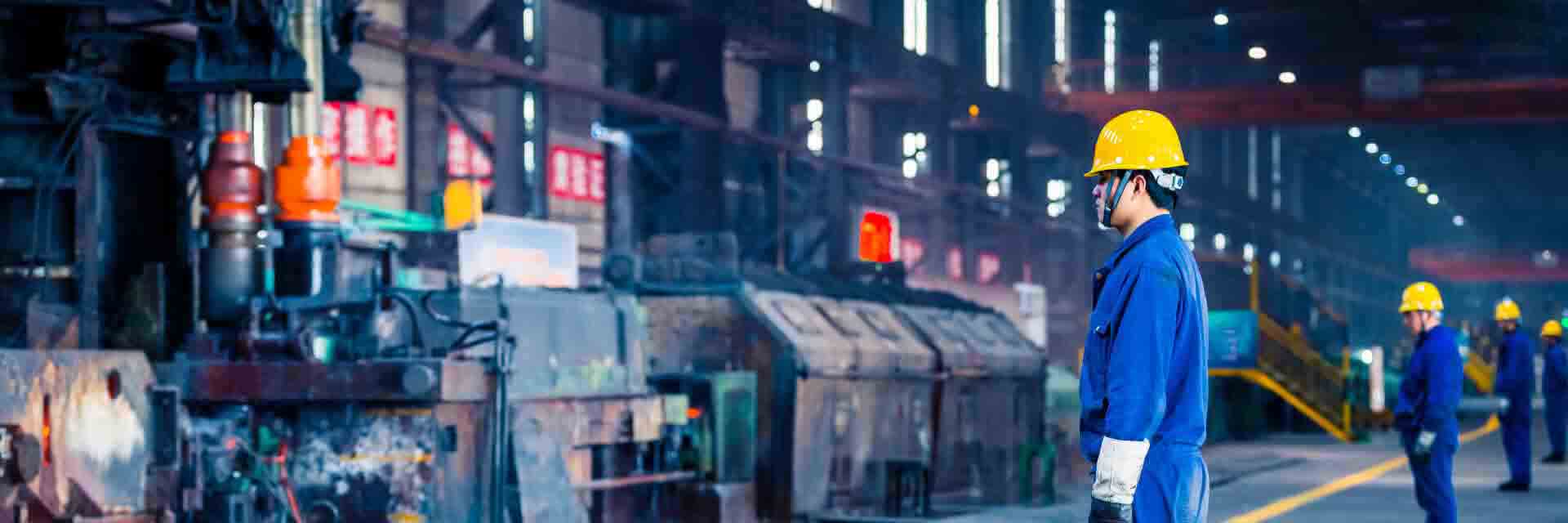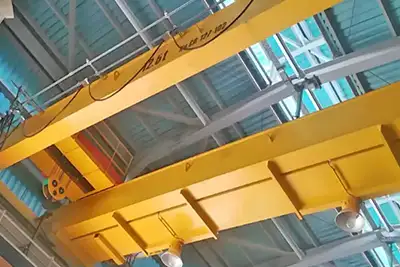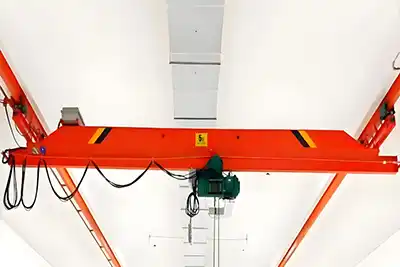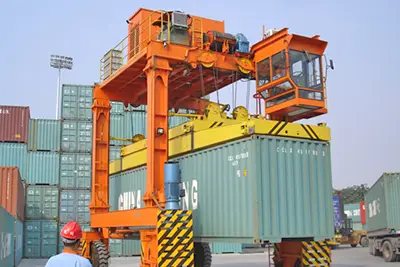Choose Right KBK Crane Capacity 500 kg to 3.2 Ton- Yuantai Crane
Introduction: Why KBK Crane Capacity Matters
When you're working in a factory or production line, handling materials quickly and accurately is everything. That’s where KBK crane systems come in. They’re lightweight, modular cranes designed for flexible and precise lifting. You’ll often find them in assembly lines, small workshops, or places where space is limited but workflow needs to be fast and smooth.
These cranes can lift anything from 50 kg to 2 tons, depending on how they're built. And because they’re modular, you can adjust the layout or expand them as your needs grow. That’s a big plus.
But here's the thing — capacity matters. A lot.
Choosing the right lifting capacity for your KBK system isn't just a technical step. It's a key decision that affects everything from safety to cost to productivity.
- Too small? You risk overloading the system. That’s unsafe and could damage both your crane and your product.
- Too large? You're wasting money on equipment you don’t really need. Bigger components also mean more weight, more cost, and sometimes more complexity.
So yes, getting it “just right” is not just nice — it’s necessary.
Who should care about this?
If you’re one of the following, this guide is for you:
- Plant Managers — You’re responsible for safe and efficient operations. A properly sized crane helps both.
- Industrial Engineers — You plan the production line layout. Load specs must match the actual use case.
- Procurement Specialists — You want to avoid overspending or buying the wrong system.
This guide is written in simple, practical terms to help you make the right call — without the fluff.
KBK Crane Systems, Cusomized for Your Needs
Before choosing the right capacity, it's good to understand what a KBK crane actually is — and what types are out there.
What Is a KBK Crane?
A KBK crane is a modular and lightweight overhead crane system. Think of it like a custom-built lifting solution made from standard parts. You can design it to fit your workspace — even in tight or odd-shaped areas.
These cranes are built using steel or aluminum track sections, which are easy to install and expand. They move smoothly, handle light to medium loads, and are ideal for precision handling.
Where Are KBK Cranes Used?
You’ll find KBK cranes in industries that deal with small or medium items — but need to lift them often and precisely.
- Assembly lines – for moving parts between workstations
- Light manufacturing – such as electronics, tools, or equipment parts
- Packaging and warehousing – to help with repetitive loading and unloading
- Workshops – where space is limited and loads vary
These cranes improve safety, reduce strain on workers, and speed up operations.
Types of KBK Systems
Not all KBK cranes are built the same. Here’s a simple breakdown of the common types.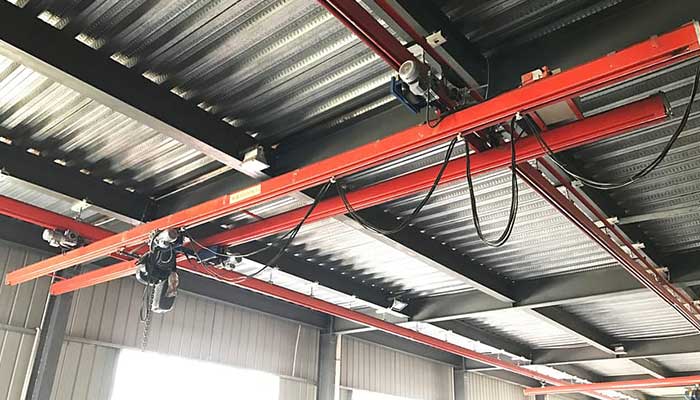
double girder kbk crane systeme for sale
Single-Girder vs. Double-Girder
- Single-girder: Lighter, simpler, and good for short spans and lighter loads.
- Double-girder: Handles heavier loads and longer spans. More stable for larger equipment.
Layout Styles
- Monorail: Ideal for point-to-point transport along a fixed route.
- Bridge system: Offers more freedom — the bridge moves along a runway, and the hoist travels across the bridge.
- Slewing crane (pillar or wall-mounted): Rotates to cover circular work areas. Great for stations where movement in all directions is needed.
Trolley and Hoist Operation
- Manual: Pulled by hand. Best for very light loads and low-frequency use.
- Motorized: Powered by electric motors. Smooth, fast, and good for frequent lifting or heavier loads.
Why Capacity Selection is Critical
Choosing the correct lifting capacity for your KBK crane isn’t just a number on a spec sheet. It directly affects the safety, cost, and performance of your operations. Let’s break it down.
Safety Risks of Under-Specification
Going with a crane that’s too small for the job is dangerous. Even if it seems to work at first, you’re putting people and equipment at risk.
- Overloading can lead to broken components, dropped loads, or bent tracks.
- Wear and tear increases fast, especially on hoists and joints.
- Accidents become more likely, especially when operators try to “make it work” with unsafe loads.
A load just slightly above the crane’s limit may not fail immediately — but it stresses the system over time. That’s a silent danger many teams overlook.
Cost Risks of Over-Specification
On the flip side, choosing a crane that’s far more powerful than needed is simply not smart business.
- You’ll pay more for components with higher load ratings — even though you don’t use the full capacity.
- Larger trolleys and beams add unnecessary weight, which may need stronger support structures.
- That could mean modifying your building, which is a major extra cost.
Also, oversizing often leads to reduced efficiency — which we’ll talk about next.
Efficiency and Performance Impact
A crane that’s too big for the task isn’t just expensive — it can also be clumsy to use.
- Heavier systems can be harder to move smoothly, especially for delicate or repetitive tasks.
- Oversized trolleys might reduce visibility or slow down cycle times.
- Operators may find the system harder to control for small, detailed movements.
If you're handling light parts like tools, small boxes, or components, a heavy-duty crane isn’t just overkill — it’s a step backward in speed and accuracy.
In short, the goal is to choose a KBK crane that fits just right. Not too weak. Not too strong. But right in the sweet spot where safety, cost, and control all line up. That’s what gives you the best return on your investment.
Factors to Consider When Choosing Capacity
Choosing the right lifting capacity for your KBK crane isn't just about picking a number. You need to think about how the crane will be used daily, the layout of your facility, and even future changes. Here’s a breakdown of what really matters.
Load Characteristics
Begin with the load itself. You want to understand not just how heavy it is, but also how it behaves when lifted.
- Maximum load weight: Identify the heaviest item you'll lift. Be sure to include a safety margin — usually 20 to 30 percent more than the actual load.
- Size of the load: Some loads aren’t heavy, but they may be large or awkward in shape.
- Load stability: Will the load stay steady during lifting, or can it swing or shift?
- Center of gravity: If the load is off-center or unbalanced, it puts uneven strain on your system.
If you're handling containers, liquids, or items that shift, always assume a bit of instability.
Handling Frequency
How often you use the crane matters just as much as what you lift.
- Occasional lifting: For light, occasional work, a basic crane may be enough.
- Frequent or continuous lifting: Choose a stronger, more durable system rated for regular operation.
- Multi-shift operations: If the crane will run day and night, look into hoist motor duty ratings and crane class.
Check the system’s duty classification to make sure it matches your workload.
Work Environment
The physical space where your crane operates affects your options and design.
- Ceiling height: Low ceilings might limit lifting height or require low-headroom hoists.
- Column spacing and obstructions: These can limit travel range or runway installation.
- Mounting options: Decide whether the crane will be ceiling-suspended, wall-mounted, or free-standing.
- Environmental conditions: Heat, humidity, dust, or chemicals may affect crane components and lifespan.
It’s important to take actual measurements and assess the conditions in person before choosing the system.
Future Growth or Load Variability
Your lifting needs may grow or change. Plan for flexibility.
- Changing products: New product lines might bring heavier or more complex loads.
- Slight overcapacity: Choosing a crane with a bit more capacity now could prevent costly upgrades later.
- Expansion possibilities: A modular KBK crane system can grow with your needs, but only if you build in room to scale.
Think ahead about what you might be lifting in the next 6 to 12 months. That foresight can save time and money down the road.
By working through these four areas carefully — load details, lifting frequency, workspace limits, and future needs — you can make a confident and practical decision on crane capacity. It's all about getting the right fit, not just for now, but for what’s coming next.
Industry-Specific Recommendations
Different industries have very different lifting needs. When choosing the right KBK crane capacity, it’s important to think beyond just weight. Consider how the load is handled, the environment, and how often the crane is used. Below are some typical capacity guidelines and practical points for specific industries.
Automotive Assembly
KBK cranes are widely used in automotive production, especially along assembly lines.
- Typical capacity range: 125–500 kg
- These cranes often lift components like doors, seats, dashboards, or steering units.
- Lifting is repetitive and must be easy on the operators.
- Ergonomics are a big concern — smooth, easy movement reduces worker fatigue.
- Often paired with manipulators or custom lifting tools to position parts precisely.
If your team works in close coordination, a lighter system that’s easy to control makes the process faster and safer.
Electronics & Precision Manufacturing
In electronics or small-part assembly, the focus is on delicate handling and fine control.
- Typical capacity range: 50–250 kg
- Loads are light but sensitive — they must be handled gently.
- Vibrations, jerky movements, or misalignment can cause product damage.
- Smooth operation is key — go for systems with precise hoist control.
- Use soft-start motors or frequency inverters to keep motion controlled.
For these setups, a small-capacity KBK crane with high precision can make a big difference in productivity and product quality.
Food and Beverage
KBK cranes in this sector must meet strict hygiene standards — it’s not just about lifting.
- Typical capacity range: under 500 kg
- Loads include boxes, trays, containers, and process equipment.
- Stainless steel or coated surfaces may be required.
- Equipment should be easy to clean and resistant to corrosion.
- Installation often takes place in cleanrooms or washdown areas.
Choosing the right crane isn’t just about capacity — it’s about making sure the materials and design match food-grade standards.
Light Machinery Fabrication
In workshops where machinery parts are made or assembled, a stronger crane may be needed.
- Typical capacity range: up to 1,000 kg
- The crane handles steel parts, tools, jigs, or sub-assemblies.
- Loads can vary in shape, and tool changes are frequent.
- Operators often need flexibility to lift, move, and position items quickly.
- Modular KBK systems are helpful because they adapt to shifting production needs.
Here, balance is key — you need enough strength to lift reliably, but not so much that the system becomes heavy or slow to operate.
Each industry has its own rhythm and demands. Choosing a KBK crane with the right capacity ensures smooth operation, safer handling, and better long-term value. Start with what your team lifts every day — then match the system to your real-world workflow.
Mistakes to Avoid
Choosing the wrong KBK crane capacity isn’t just a small mistake — it can lead to safety issues, wasted budget, and long-term performance problems. Below are the most common mistakes we’ve seen buyers make, along with why they happen and how to avoid them.
Assuming "Bigger Is Better"
It’s a common idea — if a crane can lift more, that must be a safer and smarter choice. But this isn’t always true.
- A higher-capacity crane usually means more cost upfront. You’ll pay more for the hoist, the rails, and often the entire structure.
- Heavier systems can slow things down. They may feel clumsy or harder to move, especially for smaller or lightweight loads.
- In some cases, operators may struggle with precision. A 1-ton system lifting 100 kg often lacks the fine control that a lighter system provides.
- Oversized cranes can also require a stronger support structure, which adds to installation costs.
Unless your lifting needs regularly approach the higher capacity, you may be better off with a system that's sized closer to your actual loads — with a reasonable safety margin.
Not Considering Dynamic Load Forces
People often focus only on the weight of the item being lifted. But once the crane starts moving, the actual forces on the equipment can increase — sometimes by a lot.
- When you lift a load and then stop it quickly, it creates added stress on the crane, known as dynamic force.
- A swinging load or one that’s moved at high speed also applies more strain than a still load.
- Sudden starts or stops can temporarily increase the effective weight, especially on long-span systems.
If your operation involves frequent lifting, fast hoisting speeds, or side-to-side motion, be sure to include a safety factor for these extra forces. Otherwise, even a well-rated crane can wear out faster or become a safety risk.
Ignoring Actual Load Distribution and Lifting Points
Not all loads are square or balanced. Many production items — like frames, panels, or machinery — have uneven weight or shifting centers of gravity.
- A 300 kg load that’s lifted off-center may act like a 500 kg load on one side of the crane.
- Poorly placed lifting points can cause twisting, uneven wear, or even tipping.
- Unbalanced loads are also more likely to swing during movement, which increases risk.
When specifying a KBK crane, don’t just look at the total load weight. Think about how the load will hang, where it will be gripped or hooked, and how it will behave during the lift.
Failing to Plan for Installation and Structure Support
The crane might be perfect on paper — but if your building can’t support it, problems will follow.
- Ceiling height might limit the installation of runways or hoists. Low clearance could reduce lifting height more than expected.
- Floor or ceiling structures may need reinforcement if the crane or its supports are too heavy.
- Wall-mounted or ceiling-suspended options depend on the strength and layout of your facility.
- Power supply is another key factor. Motorized trolleys, hoists, or advanced controls all require matching voltage and current.
Before finalizing your crane purchase, make sure a full site check is done. Talk to your building maintenance team or structural engineer if needed. Fixing these things later is expensive and time-consuming.
To sum up, these are not small details — they are major points that affect crane safety, performance, and cost. Take time to avoid these mistakes early. Ask questions, take measurements, and think about how the crane will be used every day. A little more planning now will prevent a lot of headaches later.
How to Accurately Determine Capacity Needs
Choosing the right lifting capacity is not guesswork. It requires careful analysis and collaboration. Getting it right ensures safety, efficiency, and cost savings. Here’s a practical guide to help you accurately determine your KBK crane capacity needs.
Conduct a Lifting Needs Assessment
Start by taking a close look at what you need the crane to do every day.
- List all the different items or loads the crane will handle. Include weights, sizes, and shapes.
- Identify the heaviest single load you expect to lift — this is your baseline.
- Consider how often each load will be lifted. Is it a few times a day, or continuously for hours?
- Think about the lifting method — will items be lifted straight up, tilted, or swung?
- Note any special handling requirements, like fragile or hot loads.
Documenting these details gives you a clear picture of your real needs — not just what you think you might need someday.
Collaborate with Your Crane Supplier for Load Testing and Simulations
Once you have your data, work closely with your crane supplier. Their expertise can help you avoid costly mistakes.
- Ask the supplier to run load simulations or provide case studies with similar applications.
- Some suppliers offer 3D modeling or software simulations to predict how the crane will perform under your specific loads and conditions.
- Request advice on how dynamic forces (like acceleration or swinging) affect your capacity needs.
- Discuss options for customized components or features if your needs are unique.
This partnership ensures you get a crane system designed specifically for your situation, not just a generic model.
Use Checklists for Capacity Planning
Checklists are practical tools to keep track of all the important factors.
- Create or use existing checklists that cover load weight, size, frequency, environmental factors, and future growth.
- Include installation requirements such as ceiling height and support structure capacity.
- Verify power supply details and control options.
- Make sure your checklist also covers safety margins — never select a crane that barely meets your maximum load.
- Review your checklist with your team and the supplier before making final decisions.
Checklists reduce errors by ensuring nothing important is overlooked.
Request Custom KBK Designs if Standard Options Don’t Fit
Sometimes, off-the-shelf KBK cranes don’t quite meet your exact needs.
- If your load weights, shapes, or environment are unusual, ask the supplier about custom designs.
- Customization can include special track layouts, reinforced components, or unique mounting styles.
- Custom cranes may also integrate specialized hoists, manipulators, or control systems.
- While custom solutions might cost more initially, they can save money and headaches by improving efficiency and safety.
Don’t settle for a “close enough” crane when you can get one tailored exactly to your operation.
By carefully assessing your lifting needs, working with your supplier, using thorough checklists, and considering custom designs, you can confidently choose the right KBK crane capacity. This methodical approach protects your investment and keeps your workplace running smoothly.
Conclusion and Recommendation
Getting the right capacity for your KBK crane isn’t just about buying equipment — it’s about making a smart investment that protects your people, your budget, and your workflow.
Too small, and the crane could fail, causing safety hazards and costly downtime. Too big, and you’re spending more than you need to, with less precise handling and heavier structural demands. The sweet spot lies in understanding exactly what your loads require now — and what might change in the future.That’s why involving crane experts early on is so important. They help you map out your lifting needs, check your building’s limits, and recommend the best solutions tailored to your plant. This partnership prevents guesswork and saves headaches later.If you want to get it right the first time, don’t hesitate to reach out. We offer free consultations to review your capacity needs and help you design a KBK crane system that fits your industry and goals perfectly.
Let’s work together to make sure your crane is safe, efficient, and cost-effective — the foundation for smooth, productive operations.Contact us today and take the first step toward the ideal crane setup for your business.

